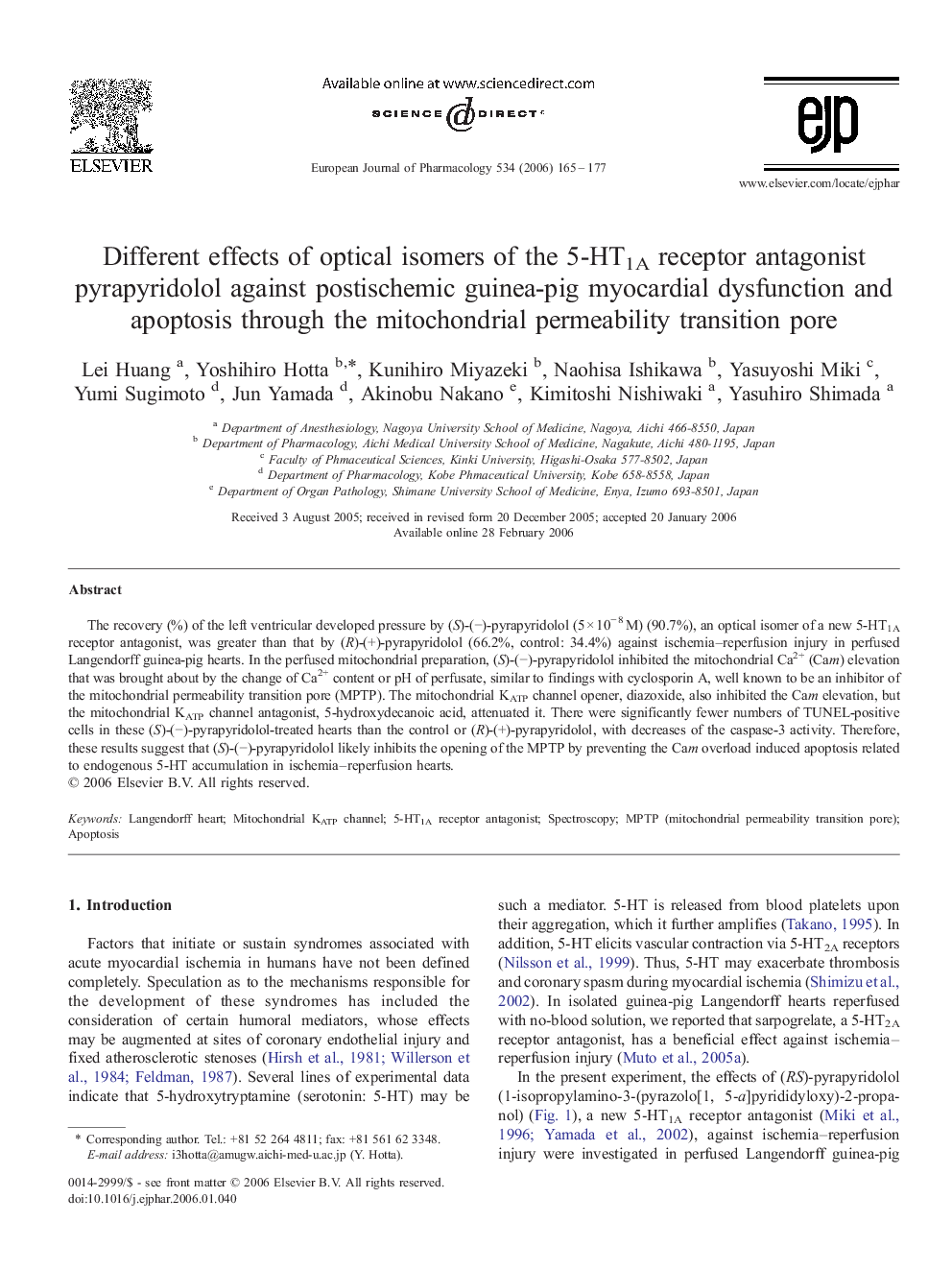| Article ID | Journal | Published Year | Pages | File Type |
|---|---|---|---|---|
| 2537485 | European Journal of Pharmacology | 2006 | 13 Pages |
Abstract
The recovery (%) of the left ventricular developed pressure by (S)-(â)-pyrapyridolol (5 Ã 10â 8 M) (90.7%), an optical isomer of a new 5-HT1A receptor antagonist, was greater than that by (R)-(+)-pyrapyridolol (66.2%, control: 34.4%) against ischemia-reperfusion injury in perfused Langendorff guinea-pig hearts. In the perfused mitochondrial preparation, (S)-(â)-pyrapyridolol inhibited the mitochondrial Ca2+ (Cam) elevation that was brought about by the change of Ca2+ content or pH of perfusate, similar to findings with cyclosporin A, well known to be an inhibitor of the mitochondrial permeability transition pore (MPTP). The mitochondrial KATP channel opener, diazoxide, also inhibited the Cam elevation, but the mitochondrial KATP channel antagonist, 5-hydroxydecanoic acid, attenuated it. There were significantly fewer numbers of TUNEL-positive cells in these (S)-(â)-pyrapyridolol-treated hearts than the control or (R)-(+)-pyrapyridolol, with decreases of the caspase-3 activity. Therefore, these results suggest that (S)-(â)-pyrapyridolol likely inhibits the opening of the MPTP by preventing the Cam overload induced apoptosis related to endogenous 5-HT accumulation in ischemia-reperfusion hearts.
Related Topics
Life Sciences
Neuroscience
Cellular and Molecular Neuroscience
Authors
Lei Huang, Yoshihiro Hotta, Kunihiro Miyazeki, Naohisa Ishikawa, Yasuyoshi Miki, Yumi Sugimoto, Jun Yamada, Akinobu Nakano, Kimitoshi Nishiwaki, Yasuhiro Shimada,
